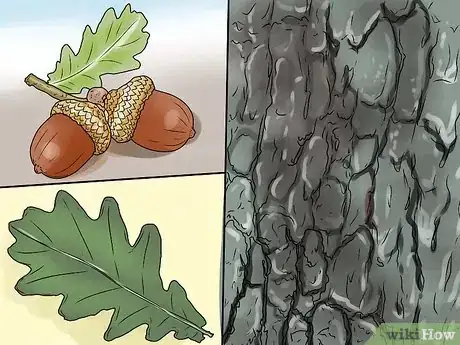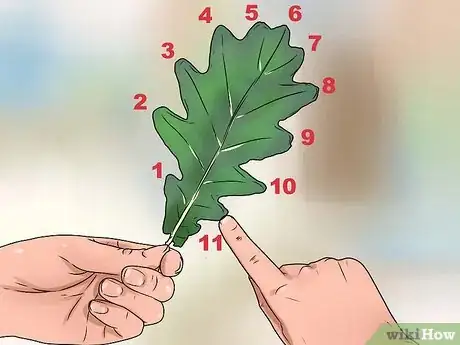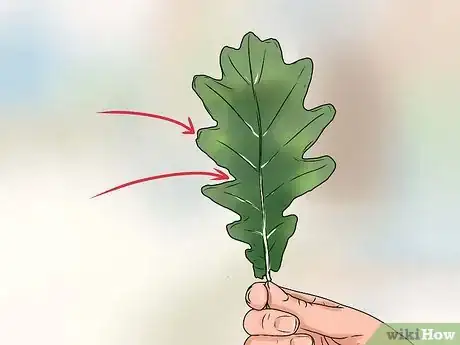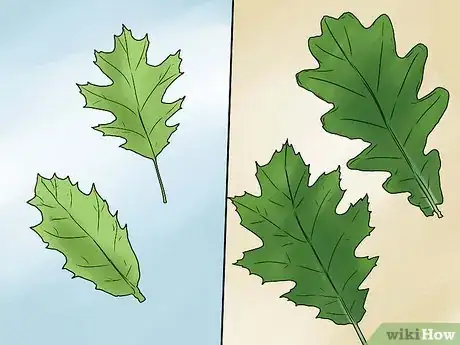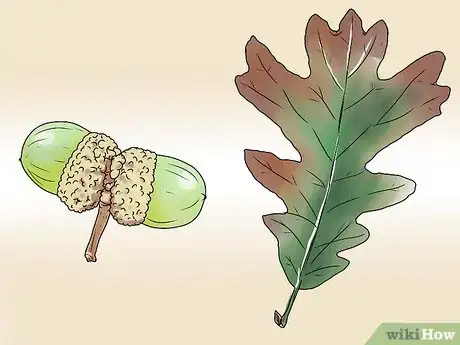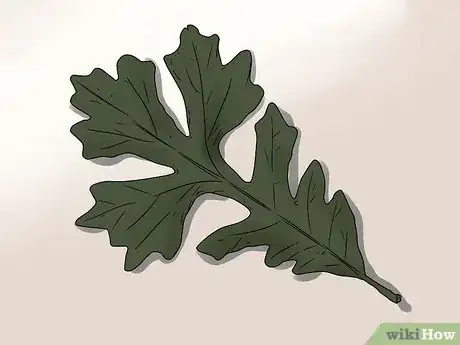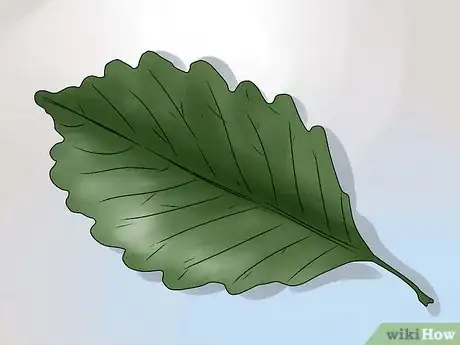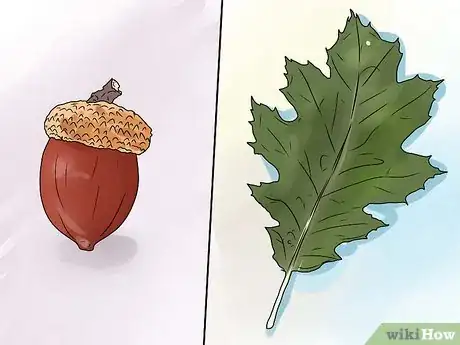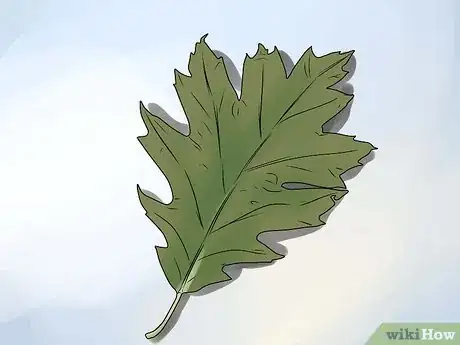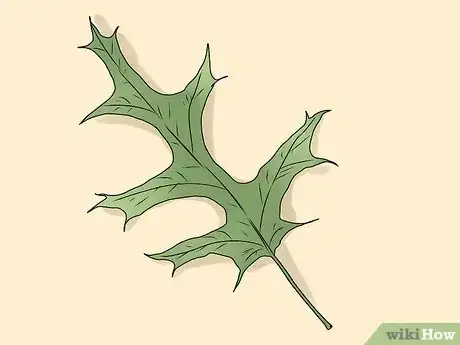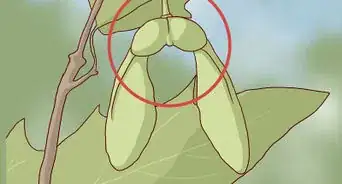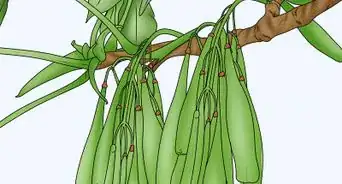This article was co-authored by Michael Simpson, PhD. Dr. Michael Simpson (Mike) is a Registered Professional Biologist in British Columbia, Canada. He has over 20 years of experience in ecology research and professional practice in Britain and North America, with an emphasis on plants and biological diversity. Mike also specializes in science communication and providing education and technical support for ecology projects. Mike received a BSc with honors in Ecology and an MA in Society, Science, and Nature from The University of Lancaster in England as well as a Ph.D. from the University of Alberta. He has worked in British, North American, and South American ecosystems, and with First Nations communities, non-profits, government, academia, and industry.
There are 10 references cited in this article, which can be found at the bottom of the page.
wikiHow marks an article as reader-approved once it receives enough positive feedback. This article received 34 testimonials and 84% of readers who voted found it helpful, earning it our reader-approved status.
This article has been viewed 1,277,068 times.
With over sixty different oak species in the U.S alone and hundreds more across the globe, it can be challenging to identify oak leaves. To help narrow down a specific tree, they can be distinguished into two basic categories by leaf shape alone: red oaks and white oaks. Learning the difference is the first step to identifying an oak leaf.
Steps
Identification Chart
Studying Leaves Effectively
-
1Differentiate oak trees from other species. Oaks, which all fall under the genus (Quercus) are wide-spread trees found in temperate climates the world over. There are over 600 known species of Oak, with 55 found in the continental United States. Because there is such a wide variety of oak trees in the world, it can be hard to find characteristics that unite them all. However, they do exist:
- Acorns are the easiest way to spot an oak tree. If the tree produces acorns, it's an oak.[1]
- Lobed leaves are leaves that have rounded or pointed knobs extending out from the center line. While a few oaks do not have lobes, all of the leaves are generally symmetrical around a clear median line.[2]
- Small, scaly bark. Bark on oak trees is variable, but it is generally made up of small, hard, and scaly bits of bark. This is unlike the large, flaky chunks of pines or the wallpaper-like bark on birch trees, and is much more cracked and grooved.[3]
-
2Look at the tips of the lobes to determine if you have a red or white oak. Lobes are the bits of leaf that extend out to each side from the center of the leaf, like points on a star. White oaks have rounded lobes while red oaks have pointed ones. This is an important distinction that will cut the number of potential trees you're trying to identify in half.[4]
- On red oaks, the vein of the leave extends all the way out to the edge, creating this point.
Advertisement -
3Consider your geographical region. Each area has its own assortment of oak species, which is often drastically different from other areas. The species of oak you will encounter changes great depending on where you are in the world, as it is rare for an oak found on the east coast to be found in the west, a southern oak in the north, etc. You can generally figure out your region with a few criteria (examples here are for Continental US):
- General location -- Northeast, Southeast, Midwest, Northwest, Southwest
- Inland or coastal.
- Mountainous or flat terrain.[5]
-
4Count the lobes on each leaf. The lobes are the sections that extend out from the center of the leaf's stem on both sides. If possible, compare multiple leaves to find the average number of lobes. A few species such as the willow oak have no lobes at all, but most oaks have multiple lobes.
- Count at least 4-5 leaves when identifying, as this will help when you turn to the field guide.
-
5Measure the indentations between the leaves. Look at the area between the lobes and determine whether the indentations are deep or shallow. White oak leaves often have variable indentations that alternate randomly between shallow and deep, where red oaks can have dramatic, sharp indentations or none at all.
- Evergreen species can have leaves that are ‘entire’ (without lobes or teeth) or that have only faintly wavy edges.[6]
-
6Look for color changes in the fall. The leaves of evergreen oaks are shiny and dark green all year, but most oaks will turn colors in autumn. Some oaks, such as scarlet oak (Quercus coccinea), sport brilliant colors in the fall. White oaks and chestnut oaks are often a dull brown when color comes around.
- If it's summer, look at whether the leaves are dark green or light green, and whether they're shiny or not, to help determine the species.
-
7Measure the overall size of the leaves. Evergreen oaks and a couple red oaks such as scrub oak have smaller leaves while most red oaks and nearly all deciduous white oaks have much larger leaves (at least 4 in.). This is one of the more important distinguishing features between similar species of oak.
-
8Identify any unknown oaks using a Field Guide by the US Forestry Service. Using the data you've collected, identify your oak tree using a tree manual or field guide. There are dozens and dozens of oak trees out there, and you can't he expected to know them all by heart.[7] Use the above criteria to narrow down your choices, then use the guide to find what oak you're looking at. You can look through the collection of common oak trees below, or consult a Field Guide, found through the US Forestry Service.
- Turn to the appropriate section. Most guides are divided into a red oak section and a white oak section
- Narrow your selection down to the oaks specific to your area. A good guide should have distribution maps for each species.
- Once you have a list of possibilities, look at the pictures for each one to determine your tree.
Recognizing Some Common Oak Trees
Common White Oaks
-
1Identify the common White Oak by its scaly, warty acorns. There is not only a category for all white oaks, there is actually a White Oak (Quercus alba) as well. It is distinguished by scaled, wart-like marks on the acorns and lightly colored bark. The leaves have:
- 5-7 lobes, fanning out wider as you get to the tip of the leaf.
- Indentations roughly halfway to the center.
- Bright, light green color.
- Lobes with rounded tips (like rabbit ears).[8]
-
2Identify the Post Oak. This Midwestern oak has dark bark and distinctive leaves:
- Usually 5 lobes.
- Wide, cross-like lobes.
- Leathery, dark texture and color.
-
3Identify the Bur Oak. Bur oaks, also found in the Midwest, have enormous leaves and distinctive acorns, which have an enormous cup (the little hat on the end) that almost covers the entire thing.
- Leaves can get up to 1ft long
- Wide, almost flat-ended lobes.
-
4Identify the Chestnut Oak. Found often in rocky terrain, this widespread tree has reddish-brown acorns, dark brown, furrowed bark.
Common Red Oaks
-
1Identify the common Red Oak. The common red oak has flat-topped acorns, like it was wearing a pork-pie hat.
- Light-green leaves with 6-7 lobes.
- Indented roughly midway to the center.
- Pointed lobes may have two smaller points on either side and bristle-like tips (like those on a holly leaf but not sharp to the touch).[11]
-
2Identify the Shumard Oak. The cup of the egg-shaped acorn only covers 1/4 of the whole nut, and the bark is long and light colored. A tall tree, it can get over 100 feet in height.
- Leaves are dark green.
- Lobes divide at the end into many bristle-tipped teeth.
- Deep indentations.
-
3Identify the Pin Oak. A common decorative tree, these fast-growing oaks have small, distinctive acorns with a saucer shaped cap and smooth, gray bark.
- Thin leaves with deep indentations, making the leaf look skinny.
- 5-7 lobes, each with multiple points at the end.
- Very bright, vibrant fall coloring to leaves.
- The northern Pin Oak has similar leaves, but a much longer acorn.
-
4
Expert Q&A
-
QuestionWhat do oak leaves look like?
 Michael Simpson, PhDDr. Michael Simpson (Mike) is a Registered Professional Biologist in British Columbia, Canada. He has over 20 years of experience in ecology research and professional practice in Britain and North America, with an emphasis on plants and biological diversity. Mike also specializes in science communication and providing education and technical support for ecology projects. Mike received a BSc with honors in Ecology and an MA in Society, Science, and Nature from The University of Lancaster in England as well as a Ph.D. from the University of Alberta. He has worked in British, North American, and South American ecosystems, and with First Nations communities, non-profits, government, academia, and industry.
Michael Simpson, PhDDr. Michael Simpson (Mike) is a Registered Professional Biologist in British Columbia, Canada. He has over 20 years of experience in ecology research and professional practice in Britain and North America, with an emphasis on plants and biological diversity. Mike also specializes in science communication and providing education and technical support for ecology projects. Mike received a BSc with honors in Ecology and an MA in Society, Science, and Nature from The University of Lancaster in England as well as a Ph.D. from the University of Alberta. He has worked in British, North American, and South American ecosystems, and with First Nations communities, non-profits, government, academia, and industry.
Registered Professional Biologist The classic oak leaf has distinct lobes with rounded or pointed ends. The evergreen species can have leaves that are ‘entire’ (without lobes or teeth) or that have only faintly wavy edges.
The classic oak leaf has distinct lobes with rounded or pointed ends. The evergreen species can have leaves that are ‘entire’ (without lobes or teeth) or that have only faintly wavy edges. -
QuestionHow about Live Oaks?
 Community AnswerLive Oaks have small leaves with no lobes. The tree stays green year round, with leaves falling in the spring.
Community AnswerLive Oaks have small leaves with no lobes. The tree stays green year round, with leaves falling in the spring. -
QuestionWhat do southern red tree leaves look like?
 Community AnswerThe leaves of the southern red oak have a bell-shaped base, are 5-9" long with 3-7 deep lobes. The center lobe is considerably longer than the others and quite narrow. There are bristle tips (tiny hairs) on the end of each lobe (you will not find these bristle tips on the end of the white oak leaf).
Community AnswerThe leaves of the southern red oak have a bell-shaped base, are 5-9" long with 3-7 deep lobes. The center lobe is considerably longer than the others and quite narrow. There are bristle tips (tiny hairs) on the end of each lobe (you will not find these bristle tips on the end of the white oak leaf).
References
- ↑ Michael Simpson, PhD. Registered Professional Biologist. Expert Interview. 25 June 2021.
- ↑ Michael Simpson, PhD. Registered Professional Biologist. Expert Interview. 25 June 2021.
- ↑ https://owlcation.com/stem/Types-of-Oak-Trees-with-pictures-of-bark
- ↑ https://www.wood-database.com/wood-articles/distinguishing-red-oak-from-white-oak/
- ↑ https://www.thecanadianencyclopedia.ca/en/article/oak
- ↑ Michael Simpson, PhD. Registered Professional Biologist. Expert Interview. 25 June 2021.
- ↑ Michael Simpson, PhD. Registered Professional Biologist. Expert Interview. 25 June 2021.
- ↑ Michael Simpson, PhD. Registered Professional Biologist. Expert Interview. 25 June 2021.
- ↑ http://bioimages.vanderbilt.edu/pages/compare-oaks.htm
- ↑ https://www.arborday.org/trees/treeguide/treedetail-legacy.cfm?ID=263
- ↑ Michael Simpson, PhD. Registered Professional Biologist. Expert Interview. 25 June 2021.
- ↑ http://bioimages.vanderbilt.edu/pages/compare-oaks.htm
- ↑ https://mdc.mo.gov/discover-nature/field-guide/black-oak
- http://www.treehelp.com/trees/oak/species-oak-types-white.asp
- http://www.gardenaction.co.uk/trees/quercus/oak-identify.asp
- http://www.gardenguides.com/115435-identify-oak-trees-leaf-shape.html
About This Article
If you’re trying to identify what kind of oak tree a leaf comes from, look at the lobes. If they are rounded, it’s a white oak, and if they are pointed, it’s a red oak. This will help you narrow down the potential number of oak trees by about half. Take into consideration the area where you found the leaf, as oak trees tend to be native to a certain area. You can use the number of lobes, the distance between the lobes, and the overall size of the leaves to help you narrow down your options further. To learn more about specific types of oak trees, like the common White Oak and the Black Oak, keep reading!

